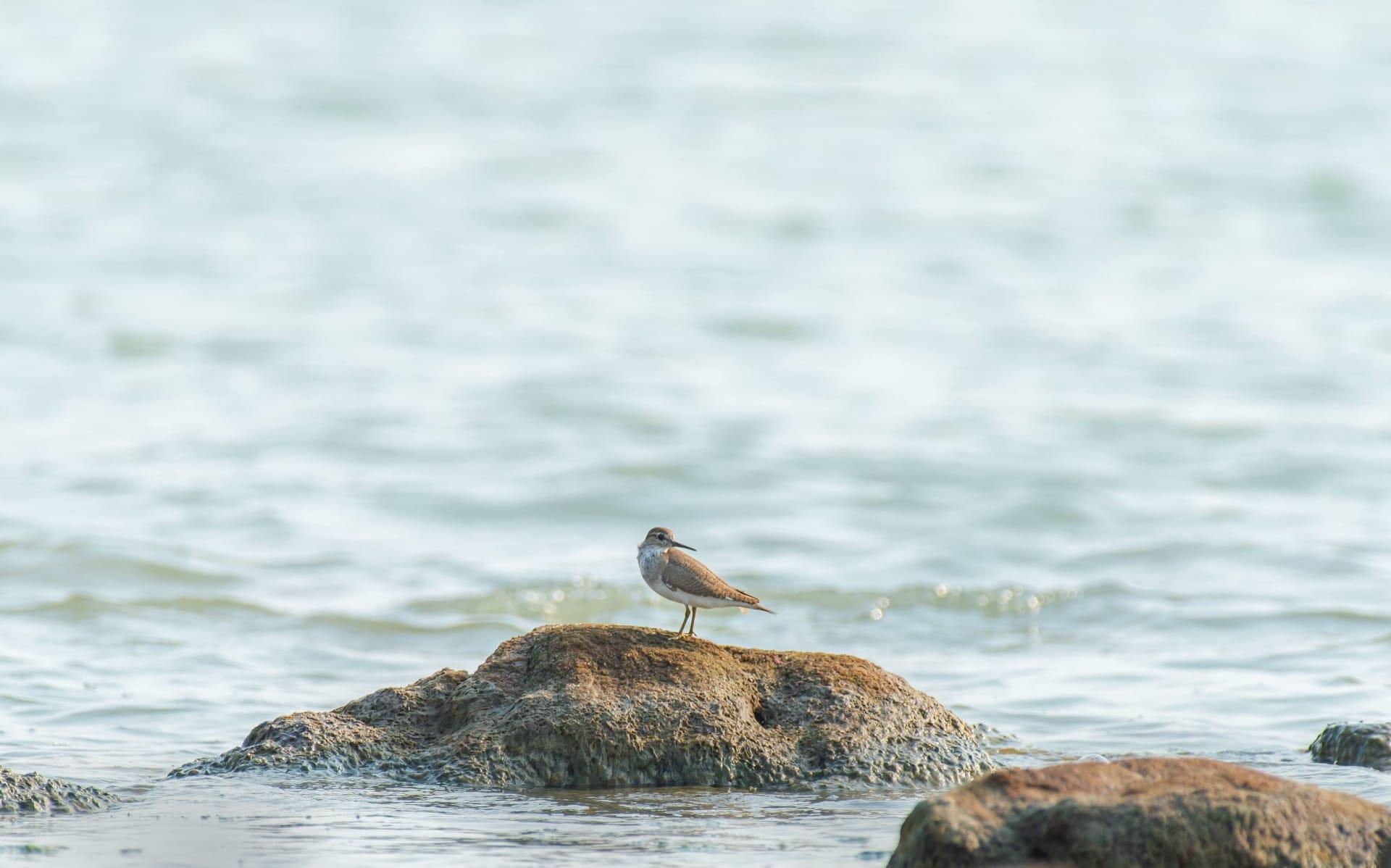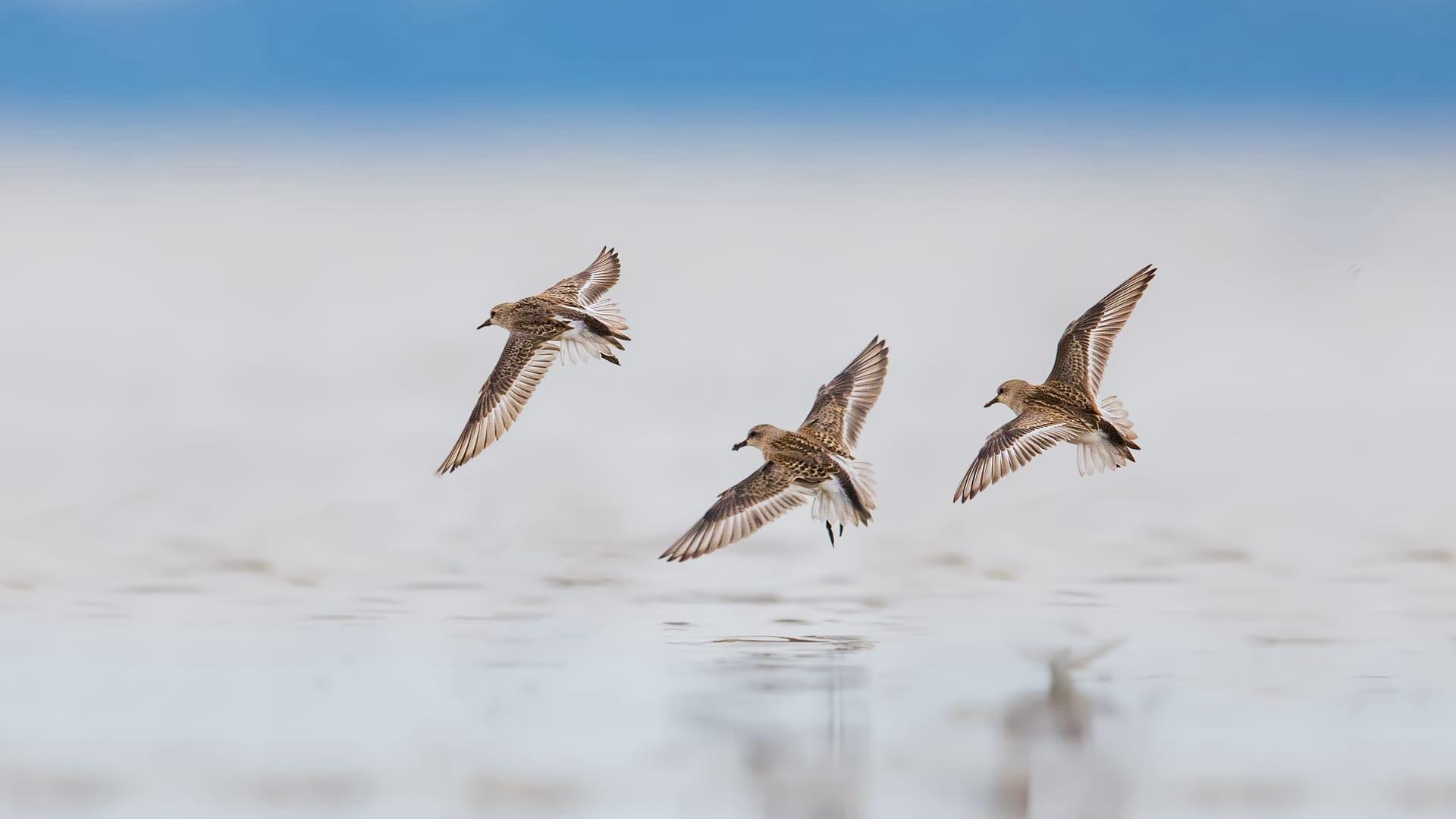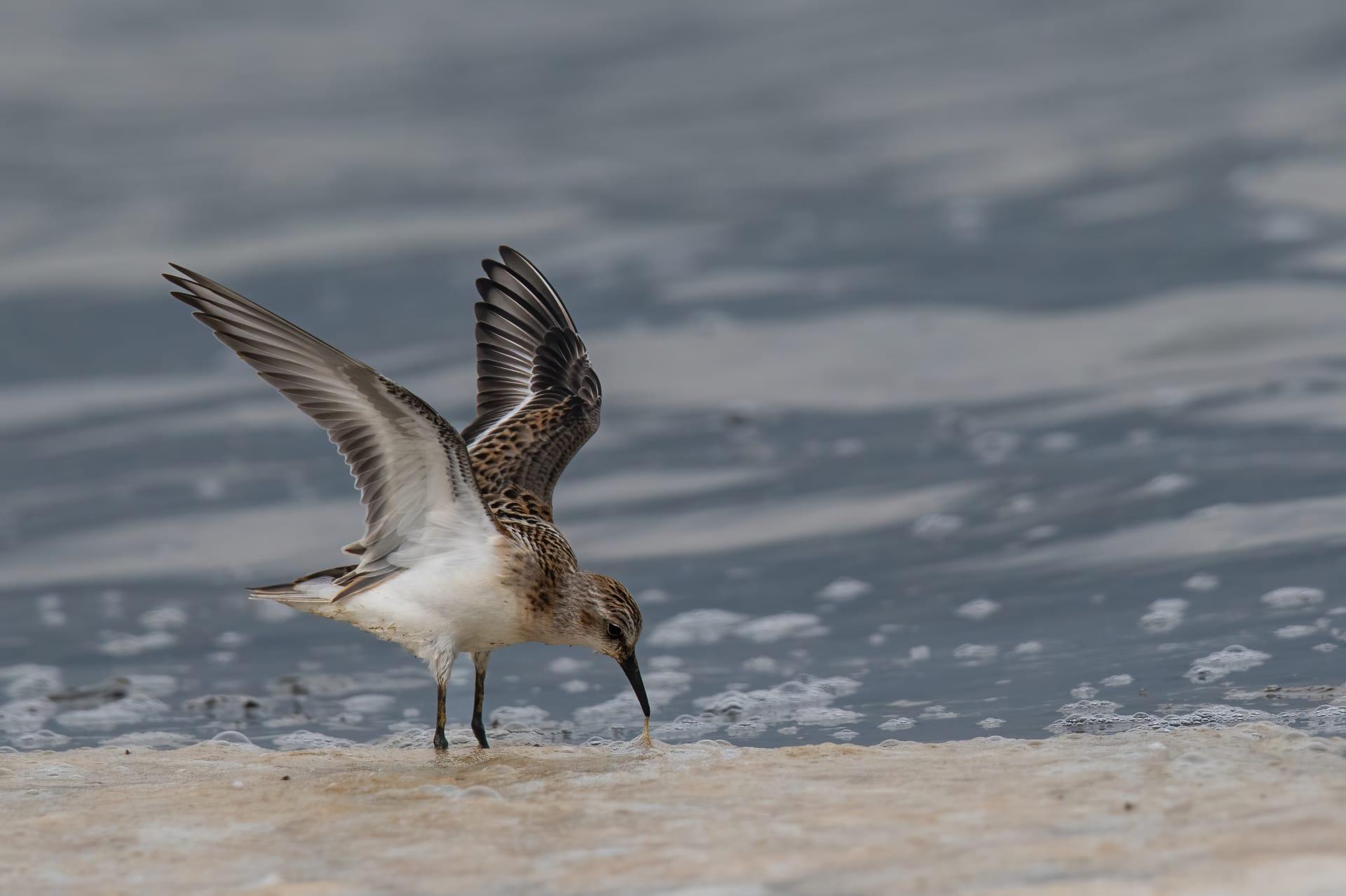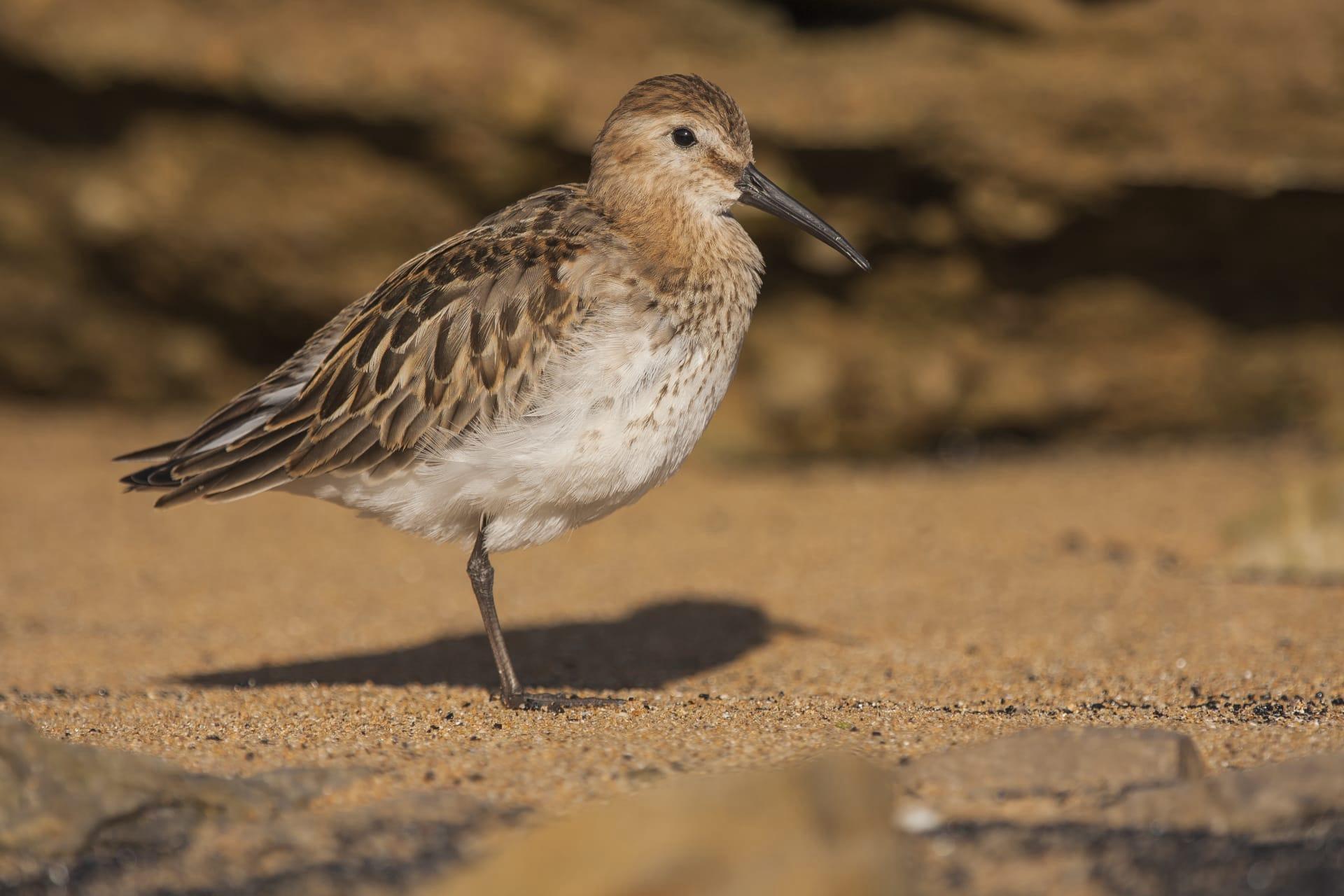1
Did you know that sandpipers have a unique way of hunting? They use a technique called 'sewing-machine' feeding. This involves rapidly pecking at the sand or mud with their beaks, almost like a sewing machine needle. This action is not just random poking; it's a skillful hunt for prey hidden below the surface. Remarkably, they can peck at a speed of up to 120 pecks per minute! That's faster than some humans can type.
Another fascinating fact about sandpipers is their migration journey. Some species, like the Western Sandpiper, embark on an epic migration covering thousands of miles. They travel from breeding grounds in the Arctic to wintering spots as far south as South America. This journey can span over 9,000 kilometers (about 5,600 miles). What's more, they do this twice a year, navigating with precision across continents!

2
Let's talk about their nests. Sandpipers are ground-nesters, which means they lay their eggs on the ground rather than in trees. Their nests are not elaborate; they are simple depressions in the ground, often lined with bits of vegetation. This simplicity is a survival strategy. Being less conspicuous helps protect the eggs from predators. Despite their simplicity, these nests are strategically located near food sources and provide quick escape routes for the chicks.
Sandpipers have an interesting family dynamic. In some species, like the Spotted Sandpiper, it's the males that take on the primary role of caring for the eggs and chicks. After the female lays the eggs, she may leave to find another mate and lay more eggs. Meanwhile, the male incubates the eggs for about three weeks and then protects and feeds the chicks until they can fend for themselves. This role reversal is quite unique among birds.

3
Have you ever heard of the 'peep' calls of sandpipers? These birds have a distinctive, high-pitched 'peep' sound they make during flight. This call helps them communicate with each other, especially during migration or when they're in large flocks. The sound plays a key role in maintaining the flock's structure and coordination, especially in poor visibility conditions.
Another interesting fact is about their diet. Sandpipers are opportunistic feeders, meaning they eat a variety of foods based on availability. Their diet includes insects, crustaceans, worms, and small fish. Their long, slender beaks are perfectly adapted for probing sand and mud to find food. Some species can even detect prey through vibrations, using their beaks like sensitive probes.

4
Sandpipers have a remarkable adaptation for living in saltwater environments. Some species have specialized glands located near their eyes, called supraorbital glands. These glands help them excrete excess salt from their bodies, which they ingest while feeding in salty waters. This unique feature allows them to thrive in habitats that would be challenging for other birds.
When it comes to social behavior, sandpipers vary greatly. While some species are solitary, others form large flocks. For instance, during migration, the Red Knots (a type of sandpiper) can form flocks of thousands of birds. These large gatherings are not only a spectacular sight but also provide safety in numbers from predators. Flock behavior also helps these birds find food more efficiently.

5
Sandpipers play an essential role in their ecosystems. By feeding on insects and other invertebrates, they help control pest populations. Additionally, their foraging behavior aerates the soil, which is beneficial for other organisms. In some areas, sandpipers are considered key indicators of environmental health, as changes in their populations can signal shifts in ecosystem dynamics.
Sandpipers can sleep on one leg. This behavior is common in many bird species. By tucking one leg up and balancing on the other, they reduce heat loss and conserve energy. This one-legged stance also allows them to quickly escape from predators if disturbed. It's an impressive display of balance and adaptation to their environment.